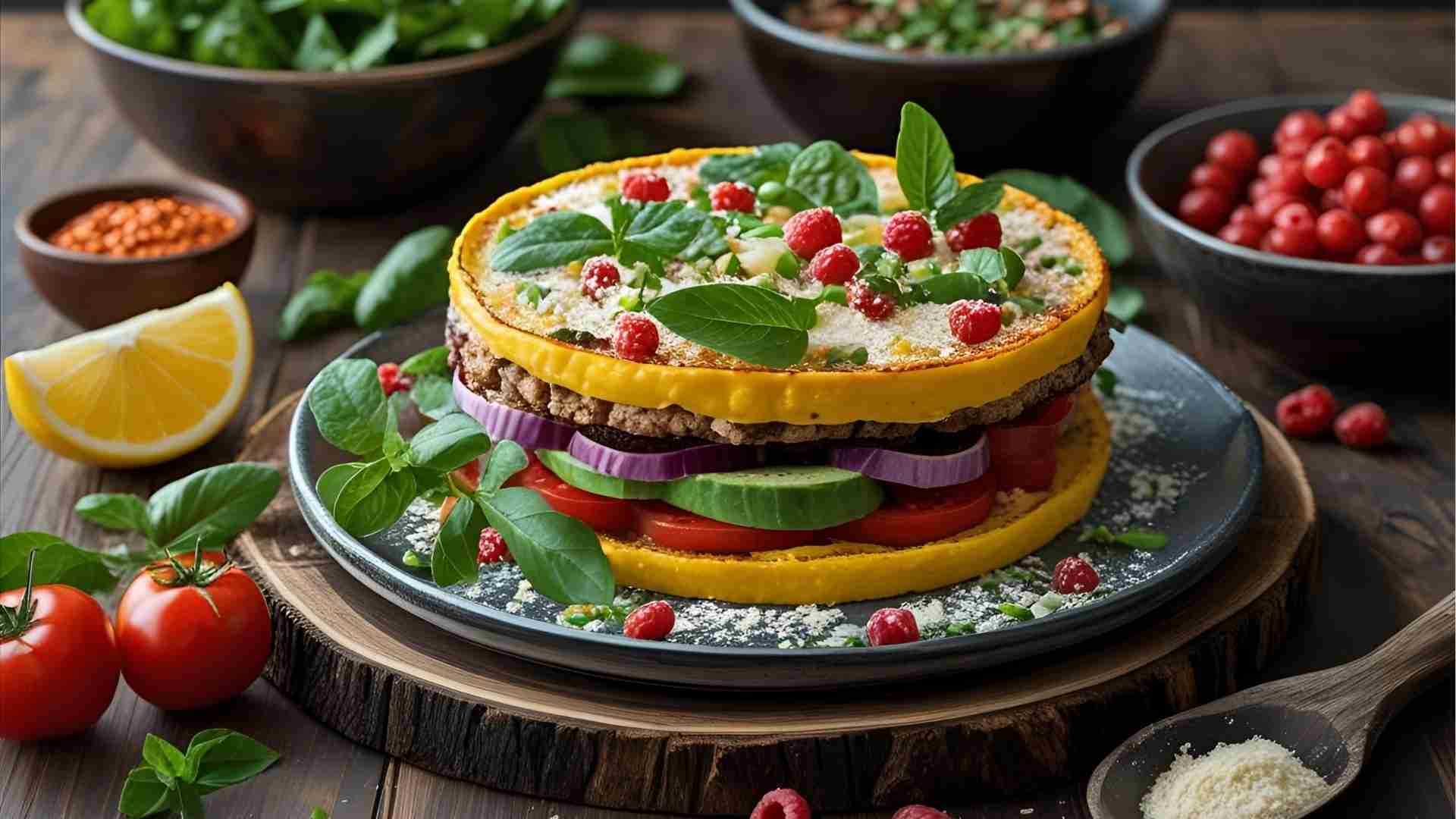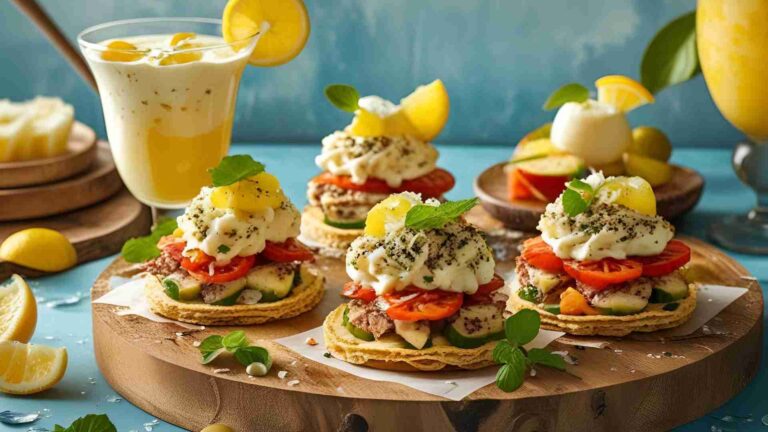The best sharing-sites for recipes?
Discover the top recipe sharing sites for home cooks, featuring global flavors, community engagement, and tips to boost your culinary presence online.
The joy of cooking lies not only in crafting delicious dishes but also in sharing them with others. For home cooks, food bloggers, and culinary enthusiasts, recipe sharing platforms offer a vibrant stage to showcase creations, connect with a global community, and even monetize their passion. With countless websites and apps available, choosing the right platform can feel daunting. This comprehensive guide explores the best recipe sharing sites, highlighting their unique features, benefits, and how they can elevate your culinary journey. Whether you’re seeking international recipes or aiming to grow your food blog, this article will help you navigate the world of online recipe sharing.
Why Share Recipes Online?
Recipe sharing sites are more than just digital cookbooks; they’re dynamic communities where home cooks can exchange ideas, gain inspiration, and build a following. These platforms offer several advantages:
- Global Reach: Connect with food lovers worldwide, from amateur cooks to professional chefs, and discover diverse cuisines.
- Community Engagement: Receive feedback, participate in discussions, and join a network of like-minded culinary enthusiasts.
- Exposure for Bloggers: Many platforms allow links to personal blogs, driving traffic and enhancing SEO.
- Monetization Opportunities: Some sites offer ways to earn revenue through recipe submissions or increased blog traffic.
- Inspiration and Learning: Access thousands of recipes, cooking tips, and techniques to refine your skills.
Whether you’re a seasoned cook or a beginner, these platforms provide tools to share your creations and grow your culinary presence. Below, we dive into the top recipe sharing sites, evaluating their features, user experience, and suitability for home cooks and bloggers.
Top Recipe Sharing Platforms for Home Cooks
1. Samsung Food
Samsung Food is a versatile cooking app designed to streamline the culinary experience. It integrates recipe sharing, meal planning, grocery shopping, and appliance connectivity, making it a favorite among tech-savvy cooks.
-
Key Features:
- Share original recipes with a global audience via mobile and integrated kitchen appliances.
- Personalized meal planning based on dietary preferences.
- Smart shopping lists to simplify grocery trips.
- No submission fees; free to use.
-
Pros:
- Wide exposure through Samsung’s network of devices.
- User-friendly interface for recipe uploads.
- Appeals to a tech-oriented audience.
-
Cons:
- Limited analytics for tracking recipe performance.
- Submission criteria may vary, affecting visibility.
- Best For: Cooks who want a seamless, tech-driven platform to share recipes and plan meals.
2. Pepper
Pepper is a social cooking app with a community-driven approach, boasting over a million users worldwide. It’s ideal for those who value interaction and collaboration.
-
Key Features:
- Create and share digital cookbooks.
- Connect with other cooks for feedback and inspiration.
- Free to use with no subscription costs.
-
Pros:
- Vibrant community fosters engagement and recipe exchange.
- Intuitive app interface for easy recipe uploads.
- Supports global cuisines, perfect for international recipes.
-
Cons:
- No direct blog linking or detailed analytics.
- Less focus on SEO compared to other platforms.
- Best For: Home cooks seeking a social, interactive platform to share and discover recipes.
3. Foodgawker
Foodgawker is a visually stunning, gallery-style platform that prioritizes high-quality photography and original recipes. It’s a go-to for food bloggers aiming to drive traffic to their sites.
-
Key Features:
- Rigorous submission process ensures top-notch content.
- Links back to personal blogs for approved recipes.
- Free to submit, with no subscription fees.
-
Pros:
- High visibility due to curated, aesthetic-focused content.
- Drives targeted traffic to food blogs.
- Engages users who value presentation.
-
Cons:
- Strict review process can be challenging for new contributors.
- Slow loading times reported by some users.
- Best For: Food bloggers with strong photography skills seeking exposure and traffic.
4. AllRecipes
AllRecipes is one of the largest online cooking communities, connecting millions of home cooks worldwide. It’s a hub for sharing recipes, tips, and culinary expertise.
-
Key Features:
- Submit original recipes to a vast audience.
- Access cooking tips, videos, and community forums.
- Free to use with optional premium features (pricing not specified).
-
Pros:
- Massive user base ensures broad exposure.
- Community-driven feedback and interaction.
- Diverse recipe collection for all skill levels.
-
Cons:
- No direct blog linking, limiting SEO benefits.
- Limited analytics for recipe performance.
- Best For: Cooks who want to engage with a large, active community without focusing on blog traffic.
5. FoodYub
FoodYub is a platform designed for chefs and bloggers to publish and monetize original recipes, emphasizing authenticity and community.
-
Key Features:
- Requires original content for all submissions.
- Links back to personal blogs for increased exposure.
- Free to use, with potential monetization through partnerships.
-
Pros:
- Enhances blog traffic and SEO through backlinks.
- Focuses on authentic, high-quality recipes.
- Supports monetization for contributors.
-
Cons:
- Smaller audience compared to larger platforms like AllRecipes.
- Limited interactive features for community engagement.
- Best For: Food bloggers looking to monetize recipes and drive blog traffic.
6. Food52
Food52 is a culinary hub that combines recipe sharing, community engagement, and kitchen product sales. It’s perfect for cooks who want to immerse themselves in food culture.
-
Key Features:
- Submit recipes for inclusion in articles and contests.
- Engage with a passionate food community through comments.
- Free to use, with optional premium content (pricing not specified).
-
Pros:
- Strong community fosters collaboration and feedback.
- Opportunities for exposure through contests and features.
- Integrates shopping for kitchen tools and ingredients.
-
Cons:
- Limited direct blog linking compared to FoodYub or Foodgawker.
- Submission process can be competitive.
- Best For: Cooks who enjoy community interaction and want to participate in contests.
7. Tasty Kitchen
Tasty Kitchen is a community-centric platform that encourages home cooks to share recipes and connect with others. It’s ideal for those who value a supportive audience.
-
Key Features:
- Share original recipes with an interactive community.
- Focus on comfort foods and seasonal dishes.
- Free to use with no subscription costs.
-
Pros:
- Supportive community provides valuable feedback.
- Easy-to-use interface for recipe submissions.
- Diverse recipe collection for inspiration.
-
Cons:
- No direct blog linking or advanced analytics.
- Less focus on SEO compared to other platforms.
- Best For: Home cooks seeking a supportive, community-driven platform.
8. Trivet Recipes
Trivet Recipes offers a minimalist, user-friendly interface for sharing and discovering recipes. It’s tailored for bloggers and enthusiasts who value simplicity.
-
Key Features:
- Requires original recipe submissions.
- Provides backlinks to personal blogs.
- Free to use with no hidden costs.
-
Pros:
- Clean, intuitive design simplifies recipe sharing.
- Enhances SEO through blog backlinks.
- Curates a searchable database of recipes.
-
Cons:
- Smaller audience compared to larger platforms.
- Limited interactive features.
- Best For: Bloggers who want a straightforward platform with SEO benefits.
9. Yummly
Yummly uses advanced algorithms to personalize recipe recommendations based on user preferences, making it a standout for tailored culinary experiences.
-
Key Features:
- Submit original recipes to a diverse audience.
- Links to personal blogs for traffic.
- Features meal planning and smart shopping lists.
- Free to use, with premium options (pricing not specified).
-
Pros:
- Personalized recommendations enhance user engagement.
- Supports blog traffic through direct linking.
- Integrates with cooking appliances for convenience.
-
Cons:
- Competitive submission process for visibility.
- Analytics may be limited for free users.
- Best For: Cooks who want personalized features and blog integration.
10. Punchfork
Punchfork aggregates high-quality recipes from top food blogs and sites, ranking them based on popularity and engagement. It’s a great choice for bloggers seeking visibility.
-
Key Features:
- Curates recipes from trusted sources.
- Provides direct links to contributors’ blogs.
- Free to use with no subscription fees.
-
Pros:
- Enhances visibility through curated, high-quality content.
- Drives traffic to personal blogs via backlinks.
- Visually appealing layout attracts users.
-
Cons:
- Limited to established blogs for aggregation.
- Less focus on community interaction.
- Best For: Food bloggers aiming for high visibility and SEO benefits.
Comparison of Key Features
To help you choose the right platform, here’s a comparison of the top recipe sharing sites based on essential features:
| Platform | User-Friendly Interface | Community Engagement | Blog Linking | Analytics | Cost |
|---|---|---|---|---|---|
| Samsung Food | Yes | Moderate | No | Limited | Free |
| Pepper | Yes | High | No | Limited | Free |
| Foodgawker | Yes | Moderate | Yes | Limited | Free |
| AllRecipes | Yes | High | No | Limited | Free/Premium |
| FoodYub | Yes | Moderate | Yes | Moderate | Free |
| Food52 | Yes | High | Limited | Limited | Free/Premium |
| Tasty Kitchen | Yes | High | No | Limited | Free |
| Trivet Recipes | Yes | Moderate | Yes | Limited | Free |
| Yummly | Yes | Moderate | Yes | Moderate | Free/Premium |
| Punchfork | Yes | Low | Yes | Limited | Free |
Chart: Recipe Sharing Platform Workflow
To visualize the process of sharing recipes on these platforms, here’s a flowchart created using syntax:

This chart outlines the typical workflow for sharing recipes, from creation to publication and engagement, highlighting the importance of quality content and platform-specific guidelines.
Recipe Sharing Sites vs. Starting Your Own Food Blog
While recipe sharing platforms offer instant exposure, starting your own food blog provides greater control and monetization potential. Here’s a detailed comparison:
Recipe Sharing Sites
-
Pros:
- Instant Audience: Access a built-in community of food enthusiasts.
- Ease of Use: User-friendly interfaces simplify recipe uploads.
- Community Feedback: Engage with cooks for inspiration and improvement.
-
Cons:
- Limited Control: Less flexibility in branding and content presentation.
- Restricted Monetization: Fewer direct revenue opportunities.
- Platform Dependency: Visibility tied to platform algorithms and popularity.
Starting Your Own Food Blog
-
Pros:
- Creative Freedom: Full control over design, branding, and content.
- Direct Audience Relationship: Build a loyal following through newsletters and social media.
- Monetization Flexibility: Earn through ads, sponsorships, and products.
-
Cons:
- Audience Building: Requires time and effort to grow readership.
- Technical Responsibilities: Involves managing hosting, design, and maintenance.
- Resource Investment: Demands time, energy, and sometimes financial costs.
For optimal results, consider a hybrid approach: use recipe sharing sites for exposure while building your own blog for long-term control and monetization. As Birthe Vandermeeren, cofounder of Bootstrapped Ventures, notes, “Maintaining your own food blog alongside submitting recipes to sharing platforms is crucial for establishing a distinctive online presence and fostering a loyal audience.”
Enhancing Your Food Blog with WP Recipe Maker
For those opting to start a food blog, WP Recipe Maker is a powerful WordPress plugin that simplifies recipe sharing and enhances SEO. Used by blogs like Divas Can Cook, it offers:
- Customizable Templates: Tailor recipe cards to match your brand.
- SEO Optimization: Automatically adds recipe metadata for better search visibility.
- Share Buttons: Encourage social sharing to boost engagement.
- User-Friendly: No coding skills required, ideal for beginners.
- Pricing: Free version available; premium plans start at $49/year (subject to change, check WP Recipe Maker for details).
This plugin streamlines the process of creating professional-looking recipe posts, making it easier to attract and retain readers.
Additional Top Recipe Websites for Inspiration
Beyond sharing platforms, several recipe websites offer inspiration and resources for home cooks. Here are five standout sites:
Pinch of Yum:
- Why It Stands Out: Combines simple, adventurous recipes with stunning photography.
- Best For: Cooks seeking user-friendly, visually appealing recipes.
Budget Bytes:
- Why It Stands Out: Focuses on affordable meals with cost breakdowns.
- Best For: Budget-conscious cooks who want flavorful dishes.
Smitten Kitchen:
- Why It Stands Out: Offers simple yet sophisticated recipes with personal stories.
- Best For: Cooks who enjoy a narrative-driven culinary experience.
Minimalist Baker:
- Why It Stands Out: Specializes in recipes with 10 ingredients or less, ideal for vegan and gluten-free diets.
- Best For: Health-conscious cooks seeking simplicity.
Half Baked Harvest:
- Why It Stands Out: Blends traditional dishes with creative twists and seasonal flavors.
- Best For: Cooks who love comfort food with a modern flair.
Tips for Success on Recipe Sharing Platforms
To maximize your impact on these platforms, consider these strategies:
- Invest in Photography: High-quality images are crucial, especially on visually driven sites like Foodgawker and Punchfork.
- Follow Submission Guidelines: Adhere to each platform’s rules to increase approval chances.
- Engage with the Community: Respond to comments and participate in discussions to build connections.
- Optimize for SEO: Use descriptive titles, keywords, and detailed recipes to improve discoverability.
- Leverage Multiple Platforms: Share recipes across several sites to diversify your audience.
- Consider a Blog: Combine platform submissions with a personal blog for greater control and monetization.
Conclusion
Recipe sharing sites like Samsung Food, Pepper, Foodgawker, AllRecipes, FoodYub, Food52, Tasty Kitchen, Trivet Recipes, Yummly, and Punchfork offer unique opportunities for home cooks to showcase their culinary creations and connect with a global audience. Each platform caters to different needs, from community engagement to SEO benefits and monetization potential. For those seeking long-term control and revenue, starting a food blog with tools like WP Recipe Maker is a powerful complement to these platforms.
Whether you’re sharing your grandmother’s secret sauce or a trendy vegan dish, these platforms provide the tools to inspire and be inspired. Take the first step today: choose a platform, share your recipes, and consider launching your own blog to build a lasting culinary legacy.
Please share these The best sharing-sites for recipes? with your friends and do a comment below about your feedback.
We will meet you on next article.
Until you can read, Hearty Crock Pot Bean and Ham Soup






